LOS ANGELES — In 1982, Clarence Holbrook Carter explained, “Beyond reality I felt there must be another realm to explore.” The statement reflects Carter’s approach to art. Though the artist, who died in 2000 at 96, began his career as an American Scene painter, his fascination with life’s mysteries underpinned his entire oeuvre.
Clarence Holbrook Carter: American Surrealist at Various Small Fires focuses almost exclusively on three series: Transection, Eschatos, and Over and Above. The central motif of the first two are egg shapes, termed “ovoid” by the artist and symbolic of life, death, and rebirth.
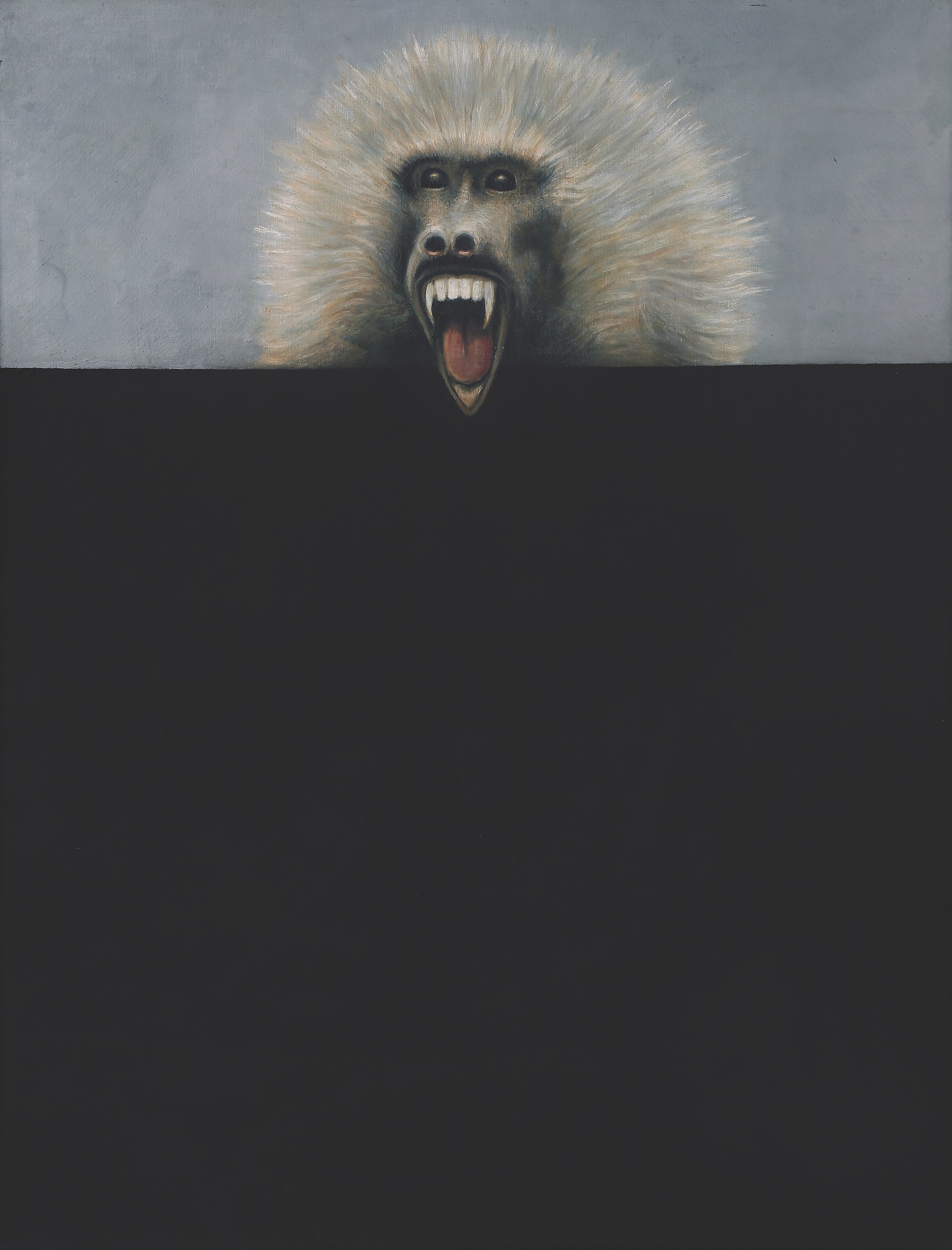
Clarence Holbrook Carter, “Over and Above 8” (1963)
In the paintings, translucent ovoids hover near empty buildings or tomblike vessels. The word “transection” in theology means to cross from life to death. The ghostly orbs and open vessels convey this, though hard-edged lines and bold, contrasting colors filter the eeriness through a graphic design aesthetic (Carter had worked as a graphic designer).
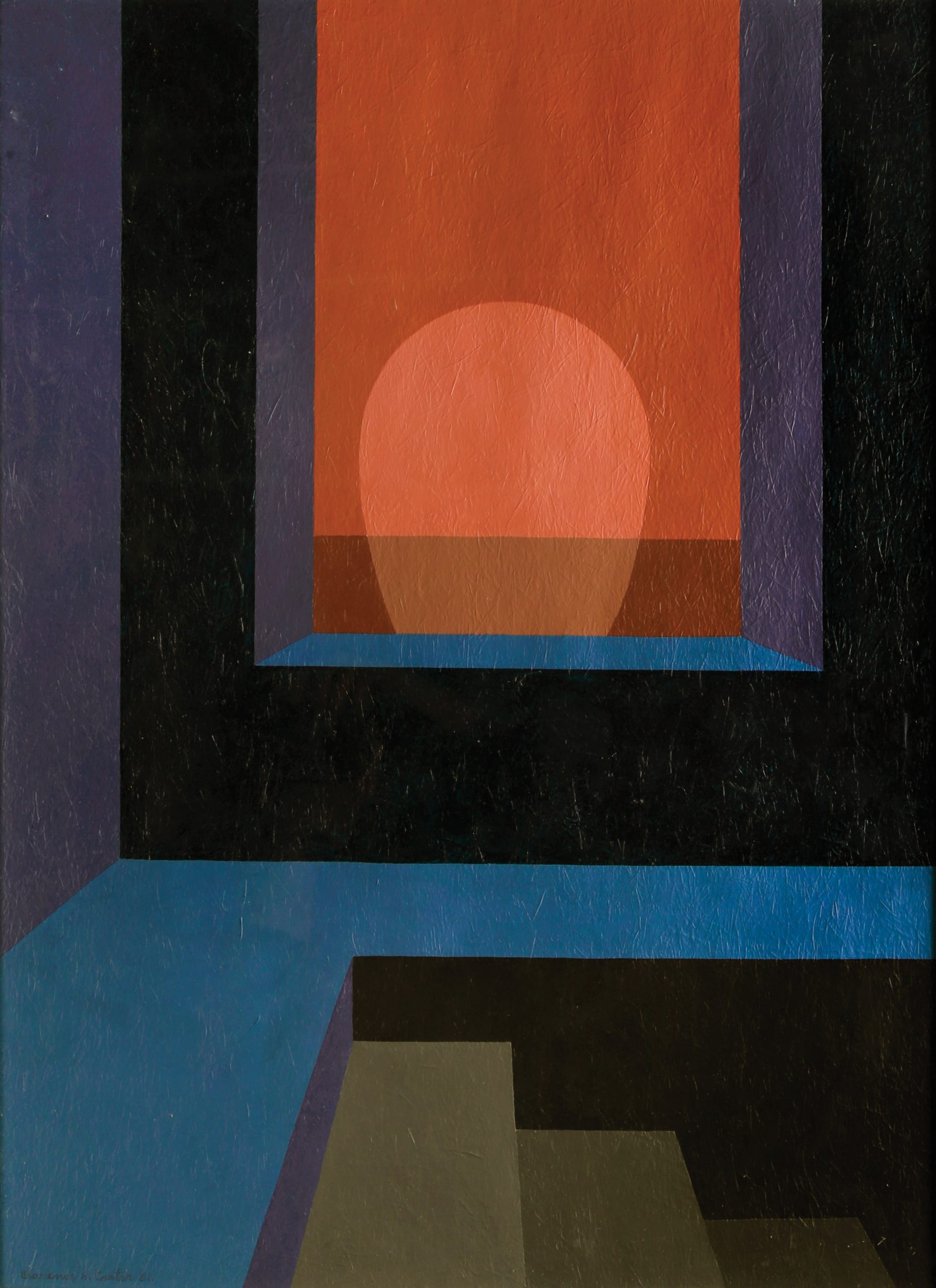
Clarence Holbrook Carter, “Study for Surveillance” (1981)
The ovoid in “Study for Surveillance” (1981) recalls a featureless face, looking at a dark interior through a window. The fiery red exterior hints at natural or nuclear destruction, or exile on Mars, and heightens the tension. It channels de Chirico, but it is tethered to the sci-fi imagination of Cold War America, the threat of nuclear annihilation. In the enigmatic “Transection” (1978), what looks like a stone tomb juts out toward the viewer, emanating a pale green glow. An ovoid floats above it, against an indigo sky.
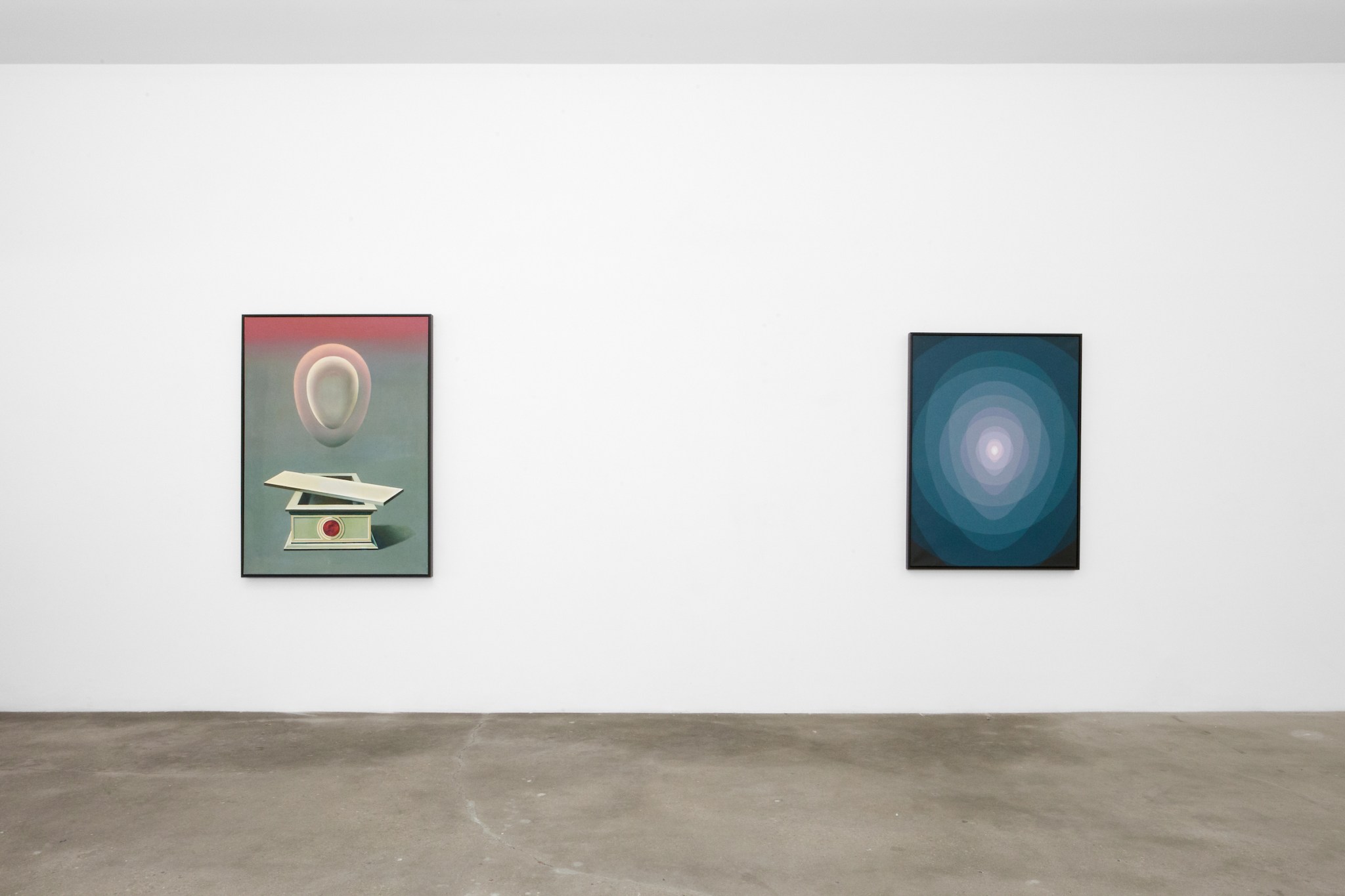
Clarence Holbrook Carter: American Surrealist, installation view at Various Small Fires
The Eschatos series abandons the hard edges of Transections for soft, dreamlike landscapes. The Greek term “eschatos” means the study of what is last; Carter’s primordial vistas — lush or rocky expanses, ruins, caves — suggest both the beginning and end of being. The two ovoids in “Eschatos” (1974) emerge from dramatic waves of clouds into an emerald valley between craggy hills and cliffs.
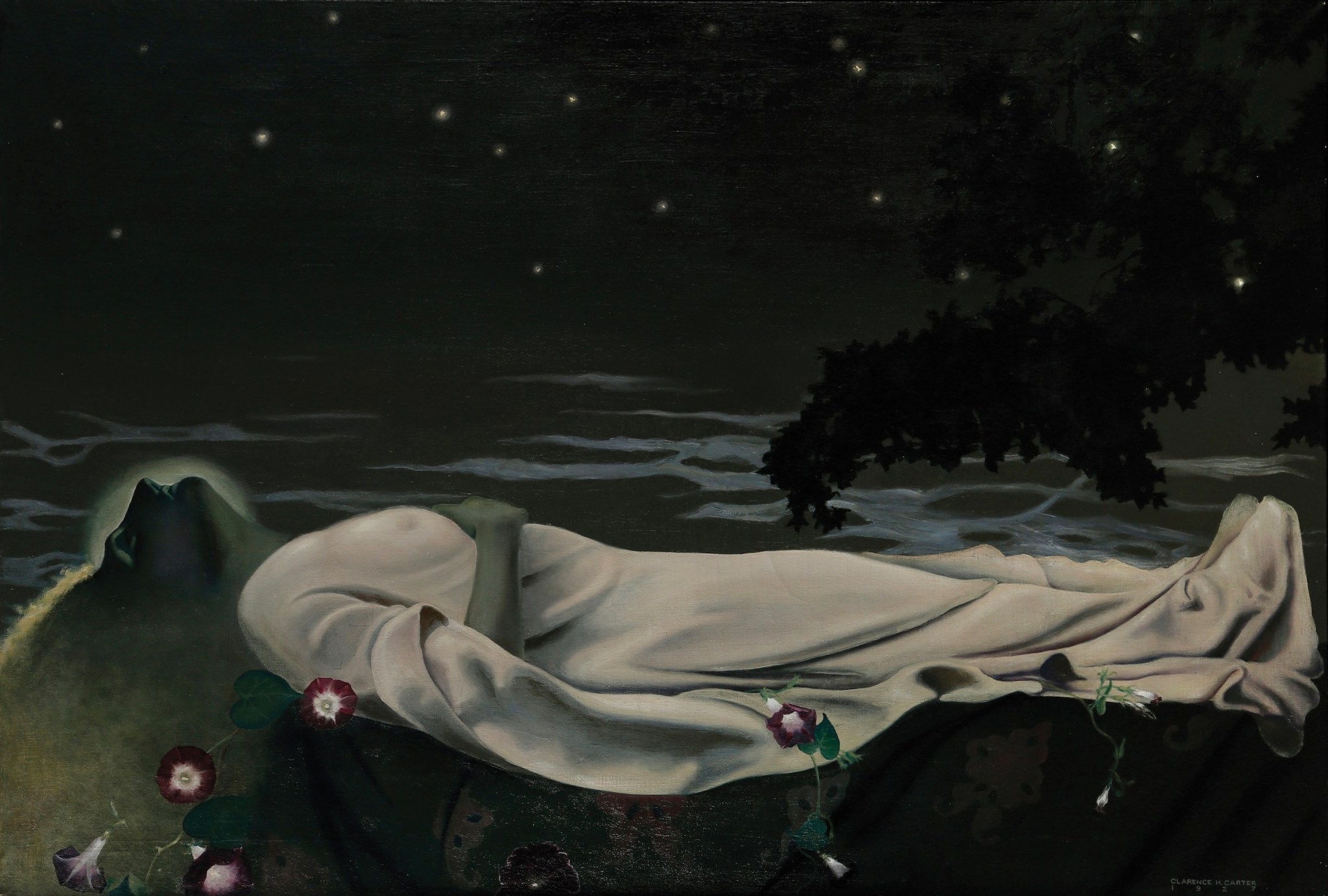
Clarence Holbrook Carter, “The Lady of Shalott” (1927)
“Eschatos” hangs near the show’s earliest work, “The Lady of Shalott” (1927), a Symbolism-inspired portrait of a woman laid to rest beneath a starry sky. The pairing suggests a thematic continuity in Carter’s work; all three series gesture toward unknown realms, whether death or nonhuman consciousness. But Over and Above is distinct. Inspired by Carter’s fascination with “the world of other creatures,” the canvases are divided into lower monochromatic zones and upper zones, where animals lift their heads “over and above” the color field below.
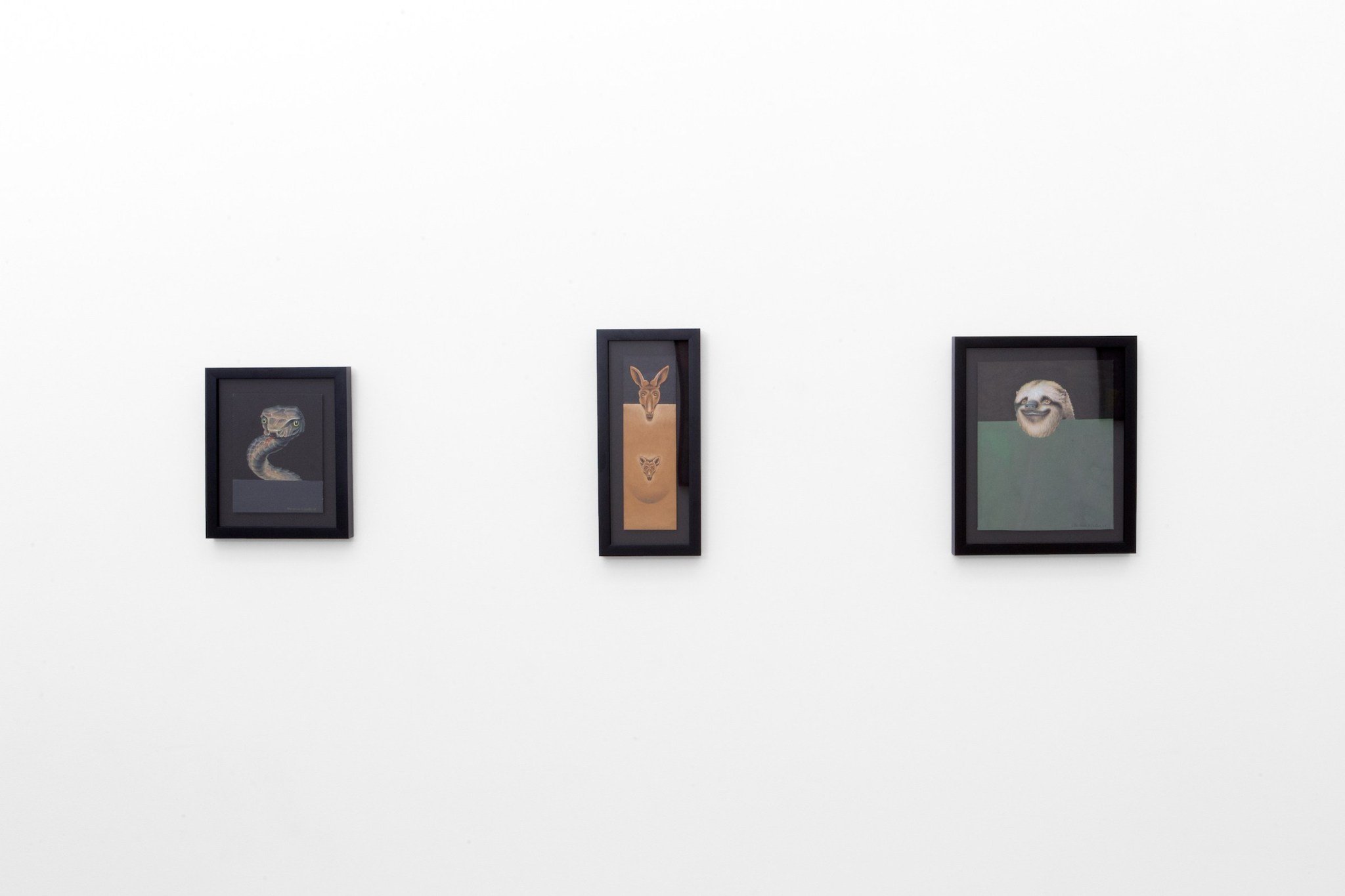
Clarence Holbrook Carter: American Surrealist, installation view at Various Small Fires
The standout of the show is “Over and Above 8” (1963). One of the largest works, at 69 by 53 1/2 inches, its lower two-thirds are pure black while the upper third features a baboon’s head, its fanged mouth open in a scream.
“Over and Above 8” is Carter at his most radical. The painting asserts humans’ limited understanding of ourselves and the natural world. The primal baboon challenges the human impulse to identify with or anthropomorphize it. Formally, Carter flouts the conventions of figuration and abstraction, as he does in no other work. The dense black alludes to both Modernist Color Field painting and the void of all that is unknown. It points to a path Carter explored but didn’t commit to, one where art doesn’t just depict new realms, but shocks us into new ways of seeing them.

